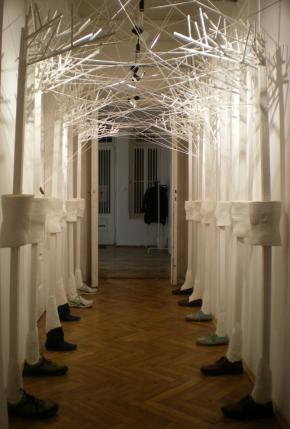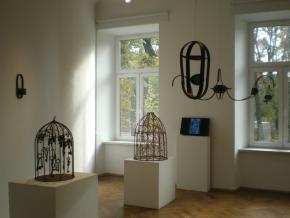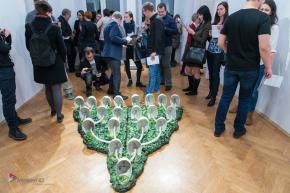The Promised Land
 Do Things Still Grow Beneath The Shadow Of Big Trees?, de Ana Rita GanhãoEduardo Marques da Costa from The Bells Brake Down Their Tower 2016 Exhibition
Do Things Still Grow Beneath The Shadow Of Big Trees?, de Ana Rita GanhãoEduardo Marques da Costa from The Bells Brake Down Their Tower 2016 ExhibitionFor centuries enslaved Africans were taken to Europe and America to serve as workforce. These individuals were forced into submission and considered sub-human. They were brutalized and treated worse than animals by other individuals, and their institutions, which thought of themselves as civilized and modern. These enslaved men and women suffered and despaired, and dreamt of a life before, and of a land more familiar and kind. So, out of the insanity of misery and helplessness, they would eat the soil in the hope of being taken back to that time and land of before. They would do it with such intent and despair that they would die due to the ingestion of earth. Their masters, even though indifferent to their faith, would become worried about their prof-its. They created masks to prevent them from such suicidal actions. As objects these men and women had not even a hold on their deaths.
In The Promised Land the artist recalls these tragic events and merges them with European Twentieth Century history. When European’s turned slavery concepts against themselves little difference existed between the barbarity and horrors that swarmed the continent and those which were faced by the African slaves. The debasing of other individuals, due to an abstract concept, opened the door in both historical moments to the enactment of the most horrendous atrocities by otherwise common men and women.
Such events and notions, the artist reflects, came from men and women who believed to be holding a certainty, and who were convinced of the righteousness of their conducts and choices. They had embraced a world view in which such barbarity towards others was accepted and even seen as positive. The unquestionable certainty they held propelled them into a dehumanization of the other. Frequently only when they became the victims of the institution and ideology they helped to erect would they see their folly and attempt to escape or confront it. In that moment they ended up discovering that they could not free themselves from its claws since it had overwhelming power over them, both physically as well as psychologically.
 The Promised Land, de Ana Rita Ganhão
The Promised Land, de Ana Rita Ganhão  The Hollow Men, de Ana Rita Ganhão. foto de Tomek Ćwiertnia
The Hollow Men, de Ana Rita Ganhão. foto de Tomek Ćwiertnia
In The Promised Land the artist recalls these tragic events and merges them with European Twentieth Century history. When European’s turned slavery concepts against themselves little difference existed between the barbarity and horrors that swarmed the continent and those which were faced by the African slaves. The debasing of other individuals, due to an abstract concept, opened the door in both historical moments to the enactment of the most horrendous atrocities by otherwise common men and women.
Such events and notions, the artist reflects, came from men and women who believed to be holding a certainty, and who were convinced of the righteousness of their conducts and choices. They had embraced a world view in which such barbarity towards others was accepted and even seen as positive. The unquestionable certainty they held propelled them into a dehumanization of the other. Frequently only when they became the victims of the institution and ideology they helped to erect would they see their folly and attempt to escape or confront it. In that moment they ended up discovering that they could not free themselves from its claws since it had overwhelming power over them, both physically as well as psychologically.
 The Promised Land, de Ana Rita Ganhão
The Promised Land, de Ana Rita Ganhão  The Hollow Men, de Ana Rita Ganhão. foto de Tomek Ćwiertnia
The Hollow Men, de Ana Rita Ganhão. foto de Tomek Ćwiertnia